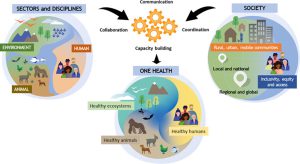The health of all people and communities is essential for creating a thriving, equitable society. But, what is the role of the arts and culture in reaching this challenging goal? What is their value for advancing health and well-being for all?
“Arts and culture can expose root issues, incorporate and amplify the voices and concerns of those who have been underrepresented, and change our very interpretation and configuration of a given health reality by bringing new and necessary dimensions into focus.”
[Sonke, et al., 2019]
The term “arts and culture” involves a range of creative aesthetic expressions and identities, which include any meaningful artistic and cultural activity in community centers, places of worship, parks, public streets, and other spaces. These activities may center around formal and informal art forms (i.e. the visual, narrative, and performing arts), culinary and spiritual practices, various forms of craftsmanship, and celebrations of local places, histories, and holidays (Jackson & Herranz, 2002). Arts and cultural traditions and practices provide critical opportunities for meaning-making, emotional connection, and expressions of creativity and imagination.
“Arts and cultural expressions and practices are a vehicle through which individuals and communities form a culture in the anthropological sense –beliefs, identities, worldviews, and values. It is through culture that we interpret and make meaning from our experiences, including traumatic ones. It is often through culture that we most profoundly and empathetically connect with other people, both those like us and those who are unfamiliar. Cultural practices help build the social connections that make communities vibrant and resilient and can help with catharsis and healing. Arts and culture reflect and reinforce social norms, but they can also shine a light on problems and unsettle the status quo, providing new ways of seeing or being in the world and stimulating or sustaining the process of change.”
[Helicon, 2018]
Arts and culture are intrinsically capable of addressing urgent public health issues, like collective trauma, racism, social exclusion and isolation, mental health, and chronic disease. But, how can it be done?
There are many ways to include the arts and culture in protecting health and addressing health challenges. Cross-sector collaboration is the key, and the “One Health” approach may provide a functional framework to apply and translate cross-sectoral collaboration into action.
The concept of “One Health” has been defined often, with different interpretations in scope and practice. To provide a more inclusive and global understanding of the concept of “One Health”, last month, the One Health High-Level Expert Panel (OHHLEP) published a new working definition:
One Health toward a sustainable healthy future as developed by the OHHLEP
(OHHLEP – One Health High-Level Expert Panel)
“One Health is an integrated, unifying approach that aims to sustainably balance and optimize the health of people, animals, and ecosystems. It recognizes the health of humans, domestic and wild animals, plants, and the wider environment (including ecosystems) are closely linked and interdependent.
The approach mobilizes multiple sectors, disciplines, and communities at varying levels of society to work together to foster well-being and tackle threats to health and ecosystems, while addressing the collective need for healthy food, water, energy, and air, taking action on climate change and contributing to sustainable development.”
[OHHLEP, et al., 2022]
Among the key underlying principles are equity between sectors and disciplines, and transdisciplinarity and multisectoral collaboration with all relevant disciplines, “both modern and traditional forms of knowledge and a broad representative array of perspective” (OHHLEP, et al., 2022).
The new definition may prepare the ground for the arts and culture as a valuable and available resource, and engage them as an equal partner in advancing health. Through this collaboration, opportunities will be expanded for the creation of healthy and equitable communities. In the long run, the new “One Health” definition may give proponents of the arts (and the humanities) an unexpected opening to change the way we improve health for all.
By: Sara Agnelli | Teaching Program Coordinator and Interdisciplinary Academic Advisor
List of sources:
Helicon Collaborative. (2018). Farther, faster, together: How arts and culture can accelerate environmental progress (Creative Placemaking Field Scan #4). Retrieved from http://heliconcollab.net/wp-content/uploads/2018/04/Farther-Faster-Together-1.pdf
Jackson, M. R. and Herranz, J. (2002). Culture counts in communities: A framework for measurement. Washington, DC: Urban Institute.
National Organization for Arts in Health (NOAH). (2017). Arts, health, and well-being in America. San Diego, CA: Author.
One Health High-Level Expert Panel (OHHLEP), Adisasmito, W. B., Almuhairi, S., Behravesh, C. B., Bilivogui, P., Bukachi, S. A., Casas, N., Cediel Becerra, N., Charron, D. F., Chaudhary, A., Ciacci Zanella, J. R., Cunningham, A. A., Dar, O., Debnath, N., Dungu, B., Farag, E., Gao, G. F., Hayman, D., Khaitsa, M., Koopmans, M., … Zhou, L. (2022). One Health: A new definition for a sustainable and healthy future. PLoS pathogens, 18(6), e1010537. https://doi.org/10.1371/journal.ppat.1010537
Sonke, J., Golden, T., Francois, S., Hand, J., Chandra, A., Clemmons, L., Fakunle, D., Jackson, M.R., Magsamen, S., Rubin, V., Sams, K., Springs, S. (2019). Creating Healthy Communities through Cross-Sector Collaboration [White paper]. University of Florida Center for Arts in Medicine / ArtPlace America.
 1
1

